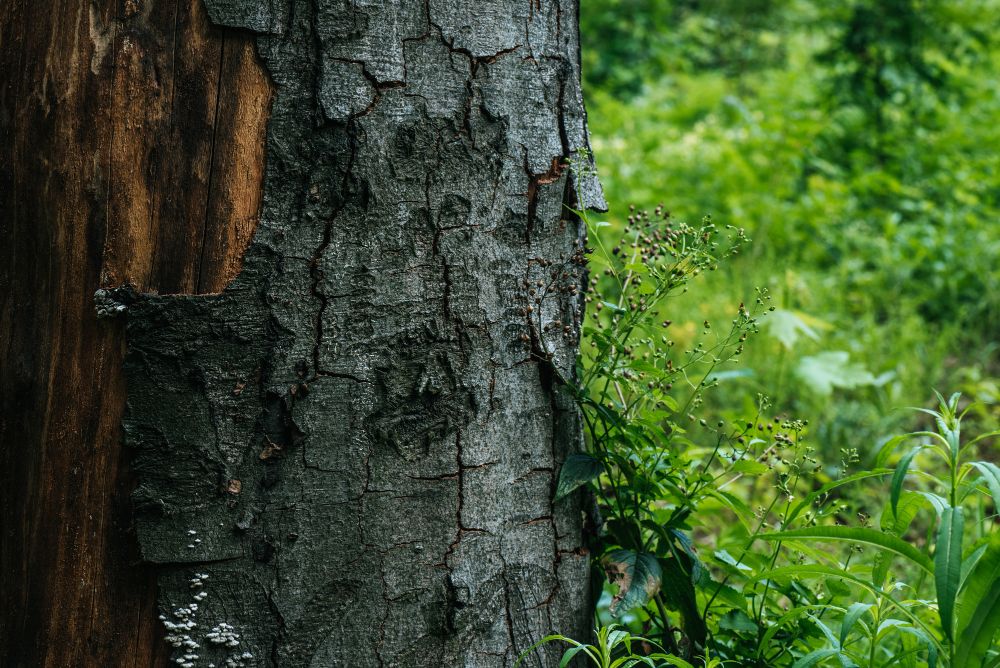Does your tree have cracks? Worried about branches or bigger limbs falling off?
Cracks are a common cause of tree failure; depending on the location of the tree this can cause varying amounts of damage to your property.
Cracks can be found in different parts of trees, their:
- Branches
- Limbs
- Stems
- Roots
Tree cracks aren’t always easy to spot either.
Sometimes the wood behind the crack is healthy and sound but other times it can be decayed, damaged or missing entirely.
Cracks are a common sight. In trees that are old and weathered, we expect them. Cracked trees can seemingly stand for years without falling. The wood behind the crack may be healthy and sound. Alternatively, the wood may be damaged, decayed or no longer there.
How do you know when to take action?
Are the Cracks Horizontal?

Horizontal cracks in a tree form just before the tree is about to fail. You won’t have long to spot the crack before the tree eventually falls. They are rarely seen for this reason, or they’re difficult to spot.
Since you can’t know when a horizontal crack is going to form precisely, you need to look out for warning signs and take action (see below).
Are the Cracks Vertical?
Vertical tree cracks appear alongside the grain of the wood, up the length of the tree. They may appear as a shear or ribbed crack, with shear being the most common.
The three types of horizontal tree crack
Shear Cracks
Sheer cracks can be particularly dangerous as they can go through the stem, and often do. This leads to two separate halves of the tree. The two h valves, separated at the step can then sway in the wind; As the tree sways from side to side the crack becomes larger and eventually the two sides split and the tree fails.
Sheer cracks almost always result in limb failure. If you have vehicles, or other property nearby, the potential of damage is clear.

Ribbed Cracks
These cracks form as a tree tries to seal over a wound. The ribbed appearance forms over many years as the weather and change in temperature causes the bark to join and contract. As the crack opens and closes the tree attempts to stabilize the situation and thicker rings are formed annually.
When is a ribbed crack a problem?
Since ribbed cracks can take years to form, and are a common sight, you might think them to be not a problem.
Ribbed cracks are a problem when there are other cracks present or there is evidence of a lot of advanced decay.

Inrolled tree cracks
Also known as a ram’s horn, an enrolled tree crack curls inwards, causing an enrolled bark. Inrolled cracks form when tree wounds do not heal properly.
These types of cracks are a sign of serious decay which can spread rapidly. The reason for this is that the rolling inwards re-wounds the tree every year.
As if this wasn’t all bad enough, inrolled cracks can also lead to other cracks.
If you notice an enrolled crack, along with advanced decay and another crack then the tree is at a high risk of failure and should be inspected.
These cracks all pose an increased risk of failure and can mean a dangerous tree. So how do you know when a cracked tree is hazardous?
When is a Cracked Tree Hazardous?
Look out for:
- Multiple cracks
- Cracks with advanced decay
- Horizontal crack (just before the tree fails)
What to do with a Cracked tree?
- Avoid shaking the tree
- Remove broken branches (if safe to do so)
- Call if you need help with hanging limbs
- If in doubt, call a licensed and insured arborist
Don’t underestimate the damage of broken limbs and branches, particularly in stormy weather.
